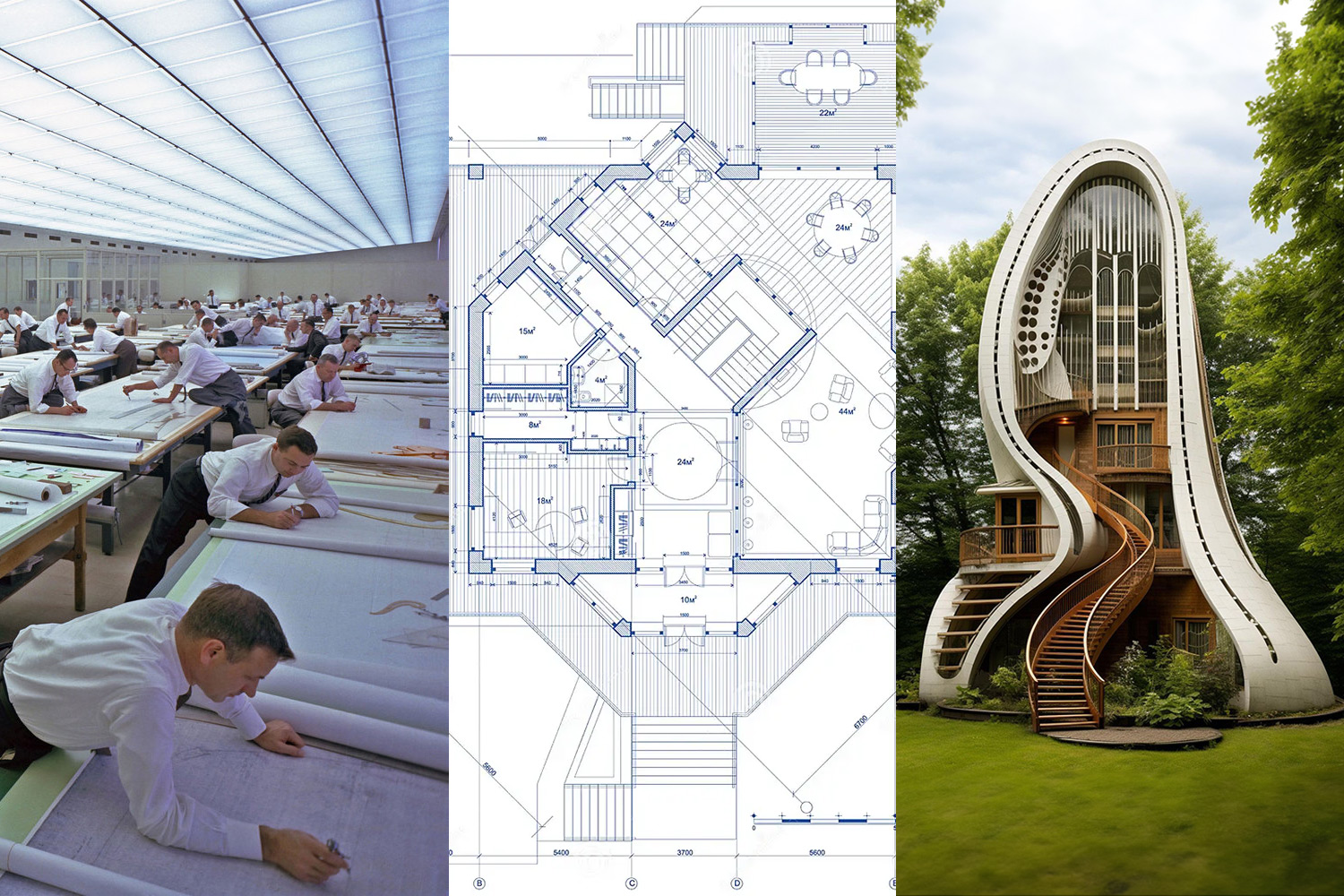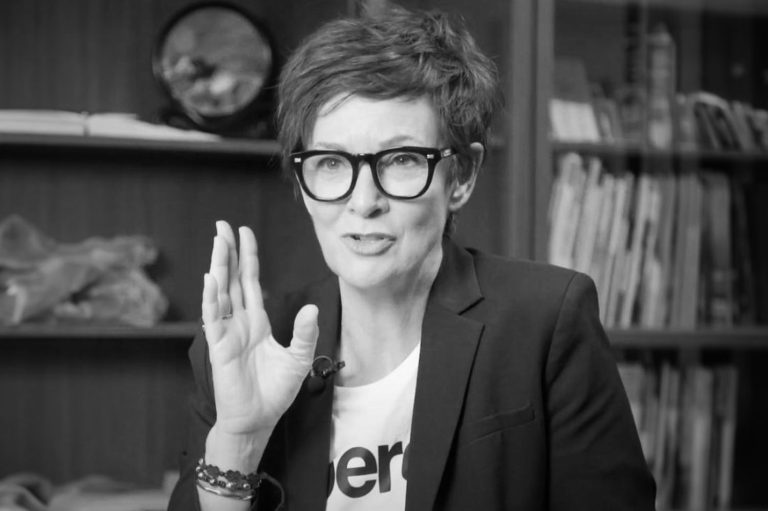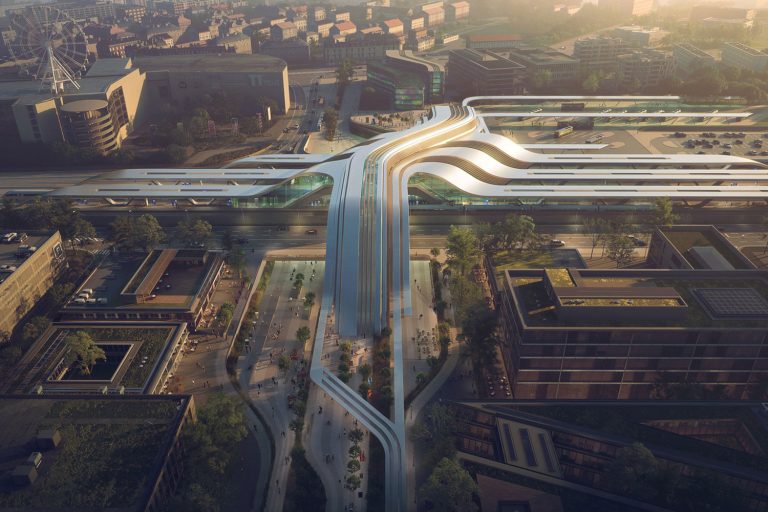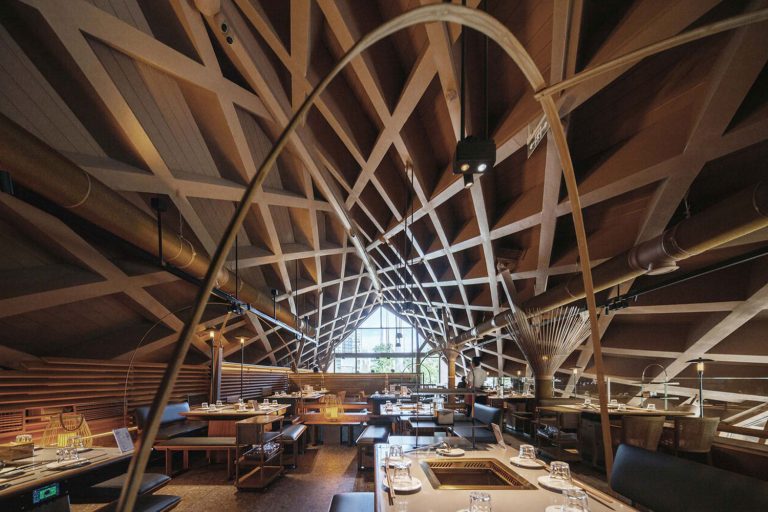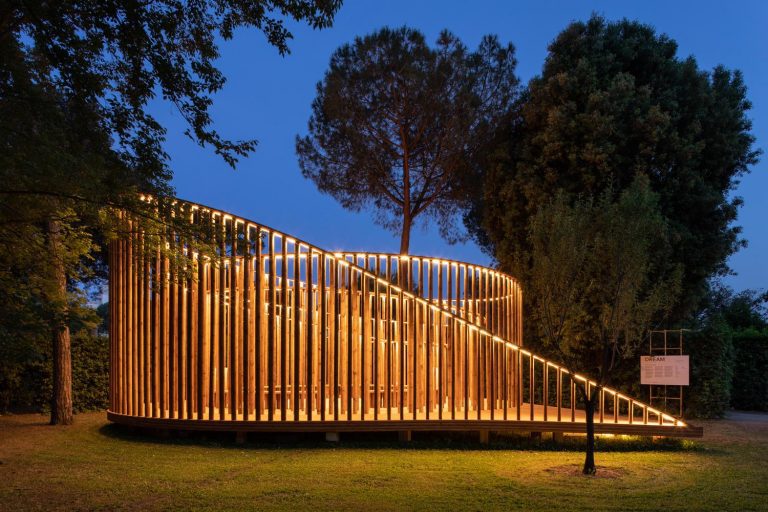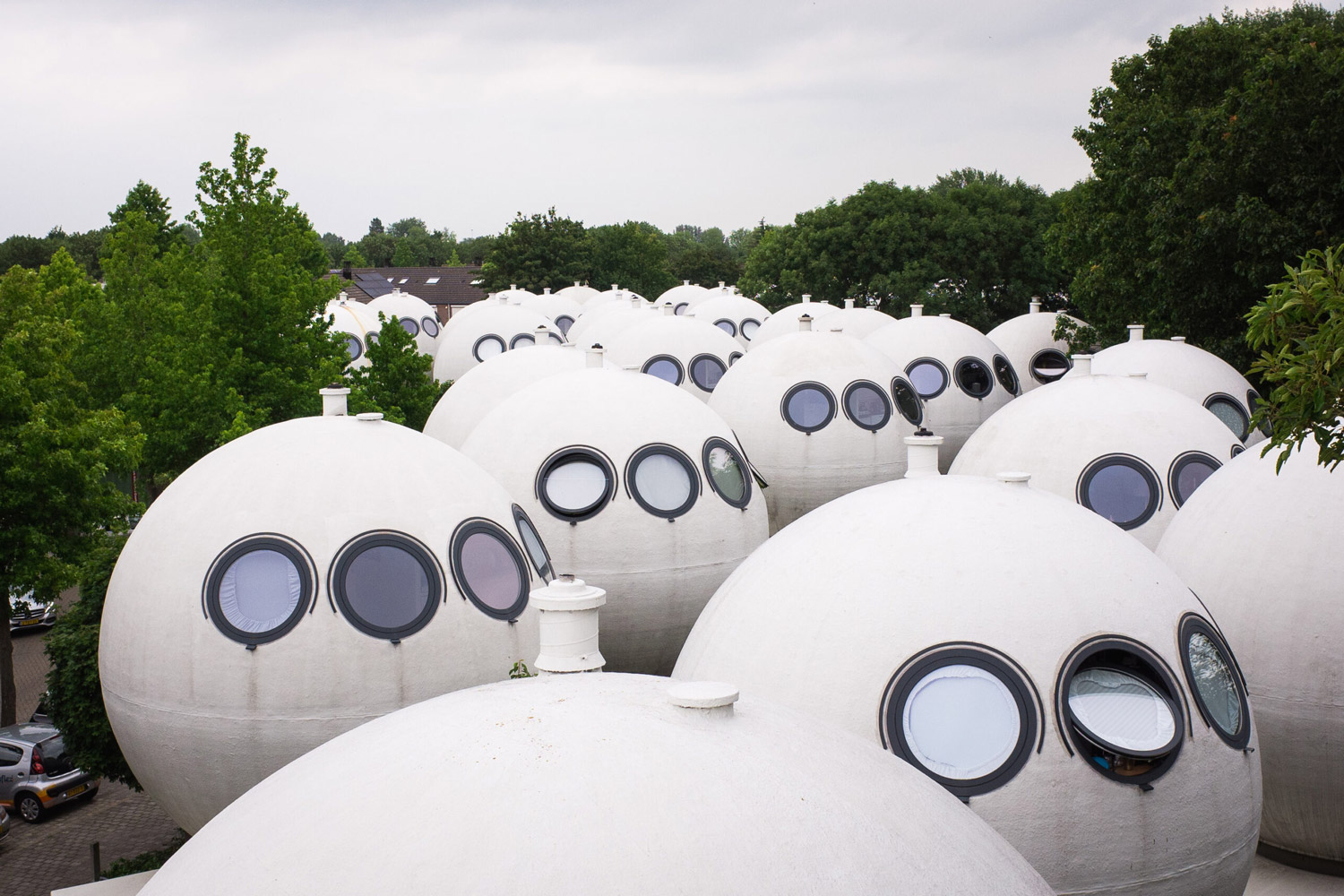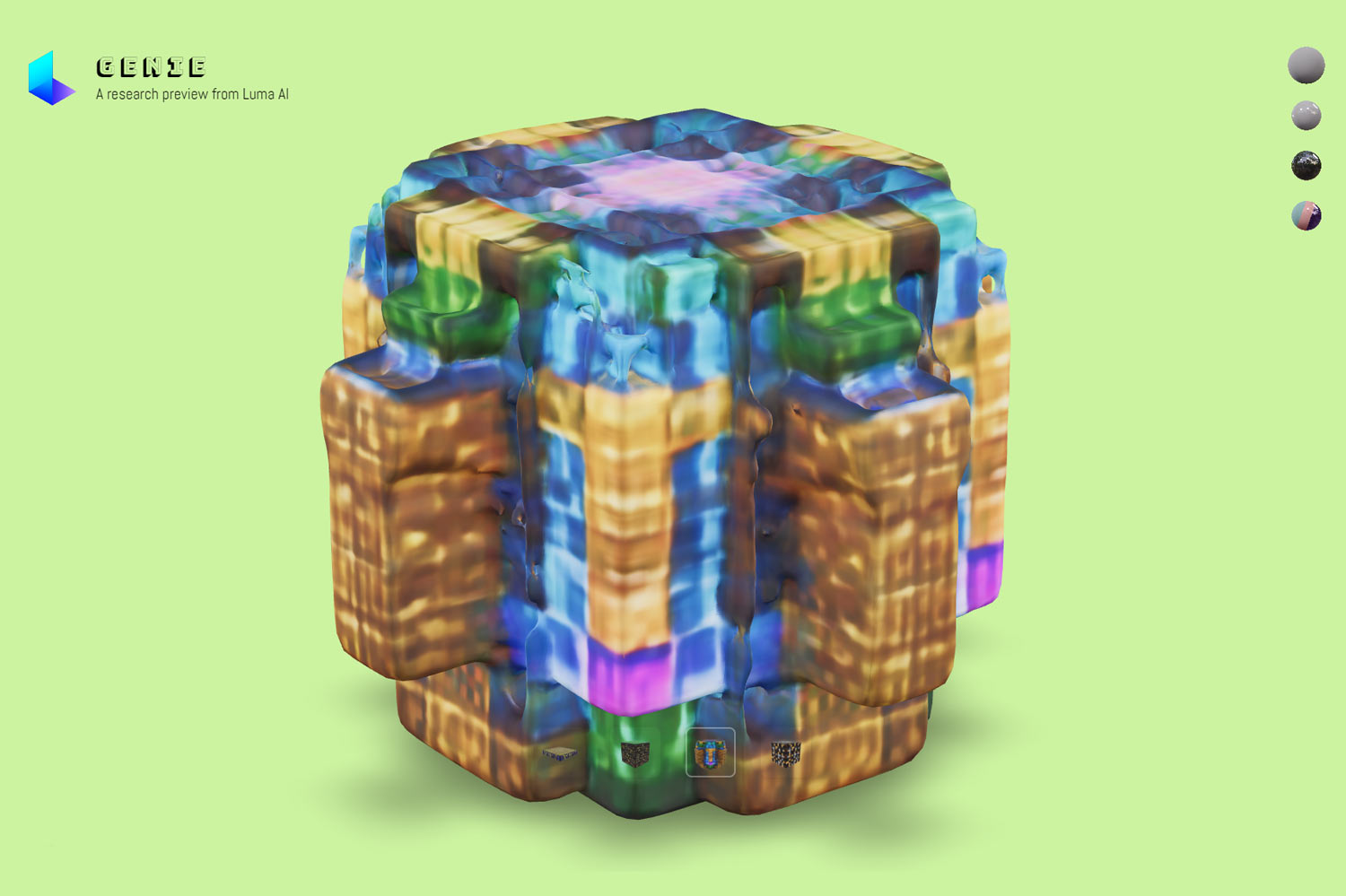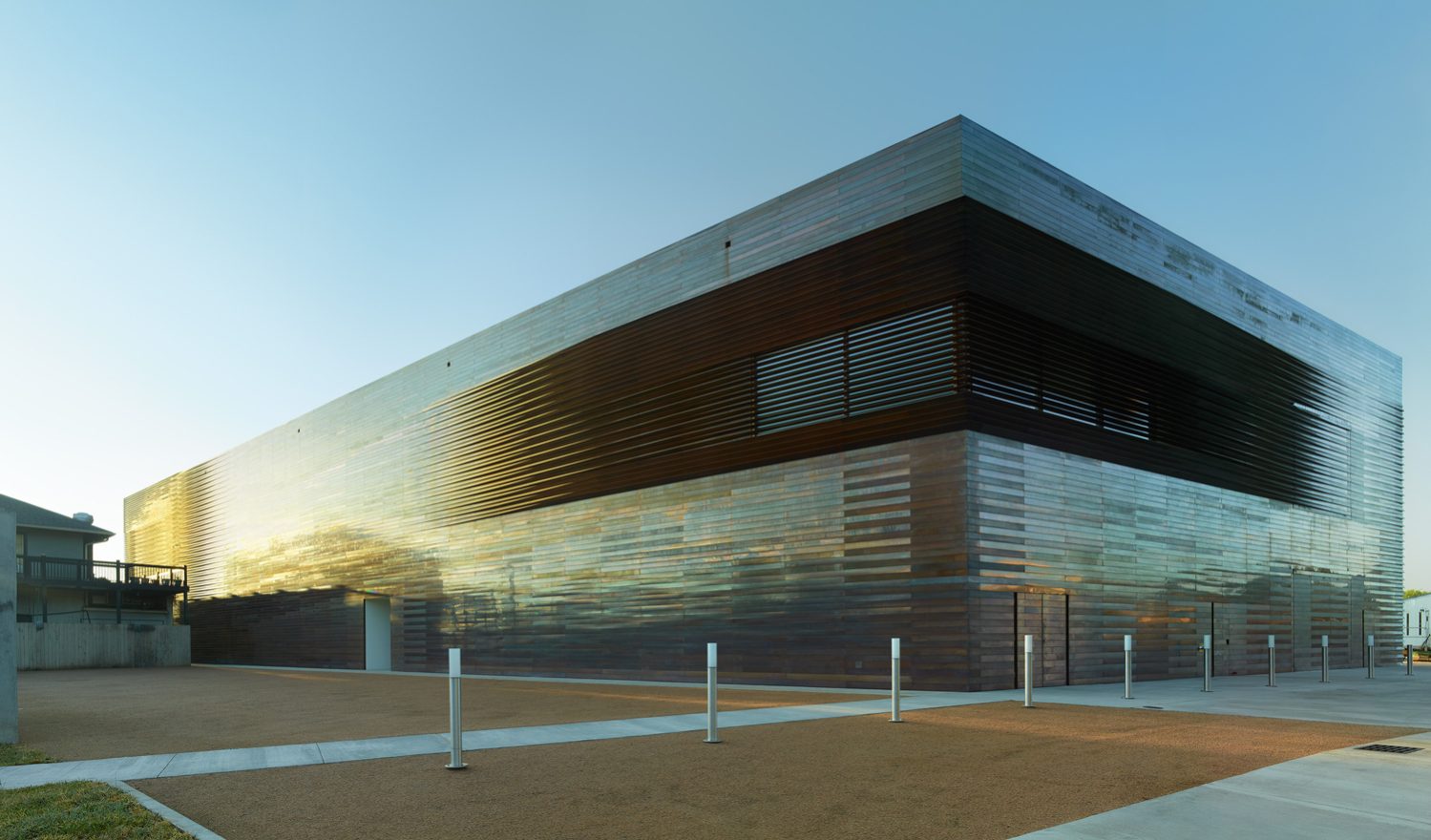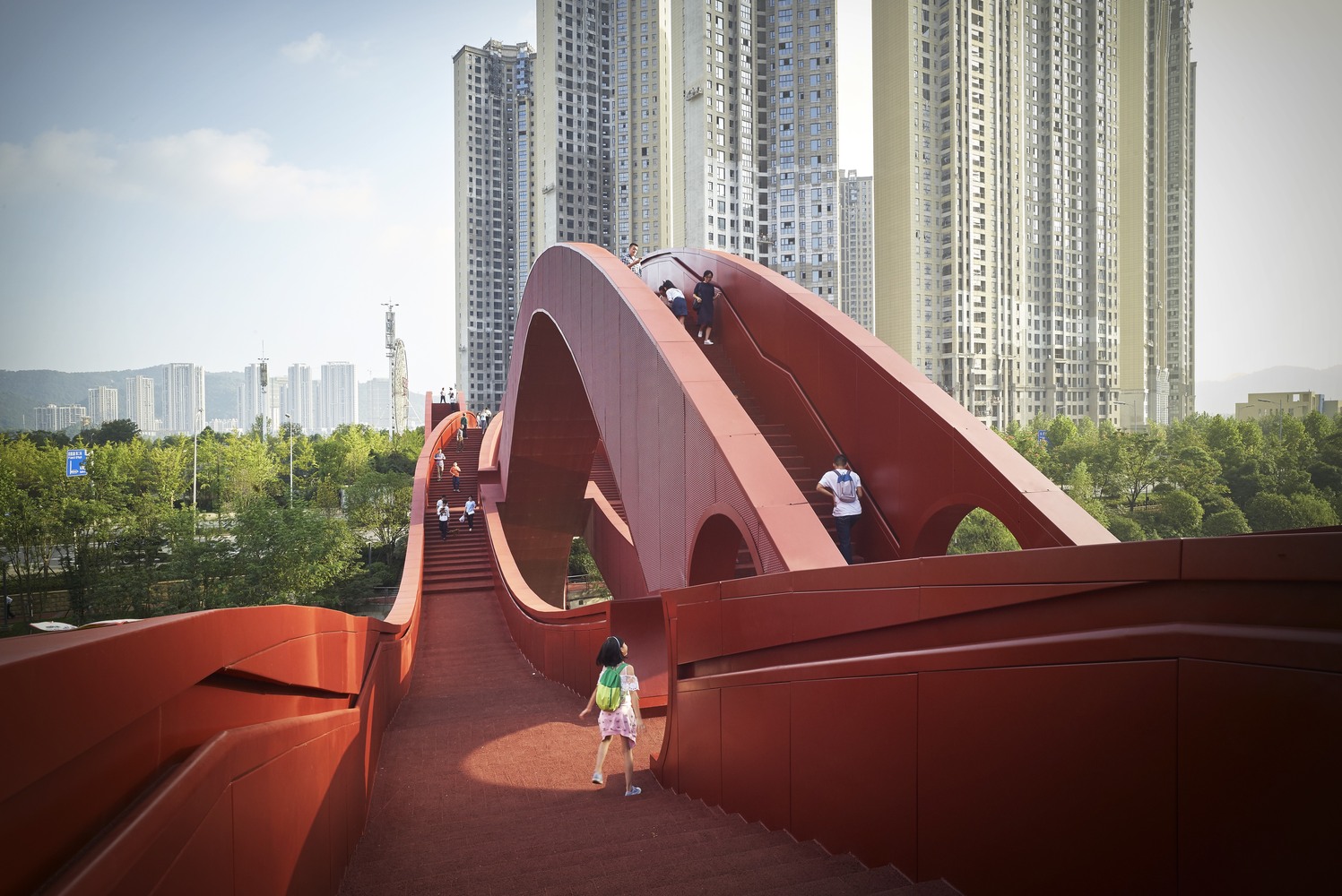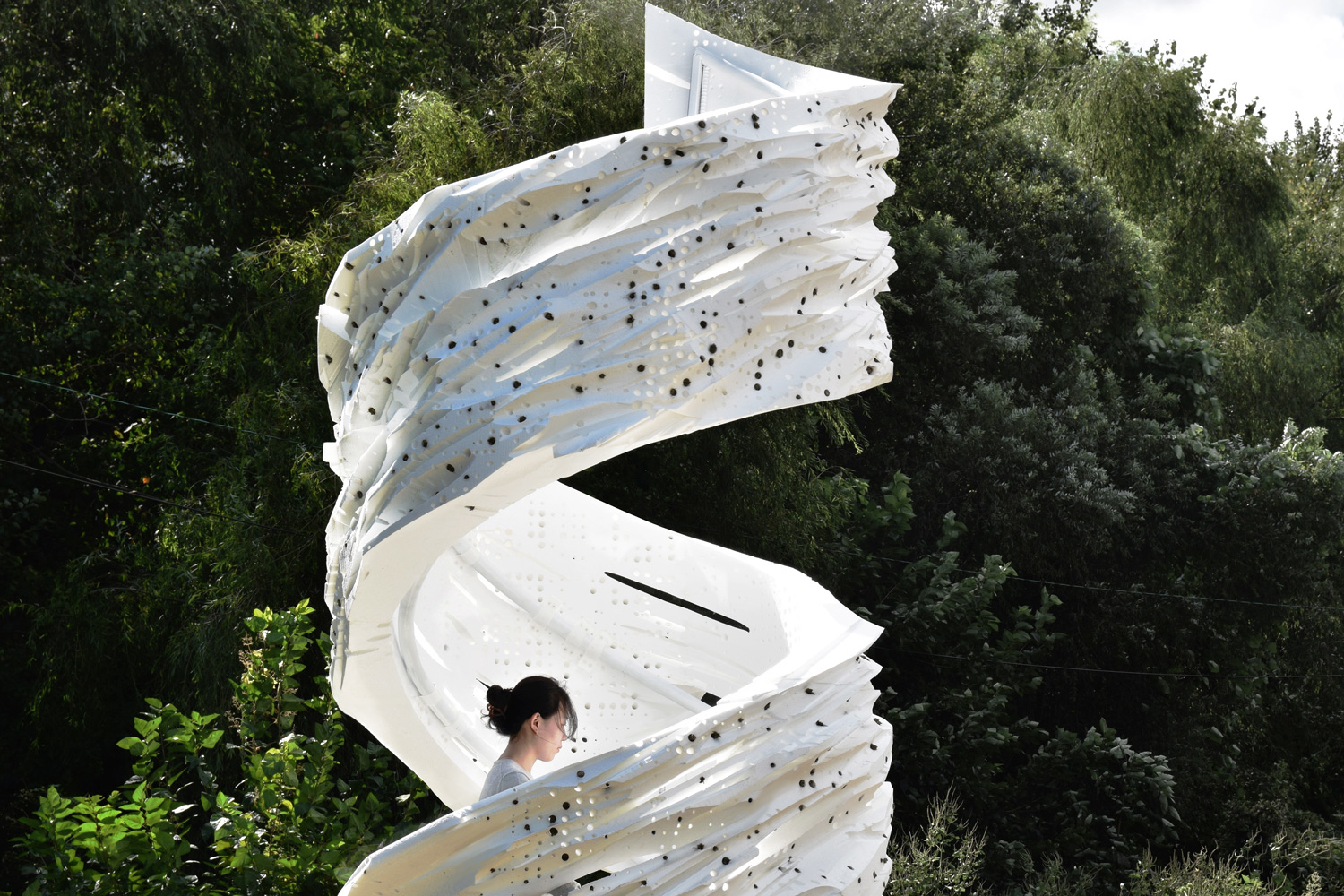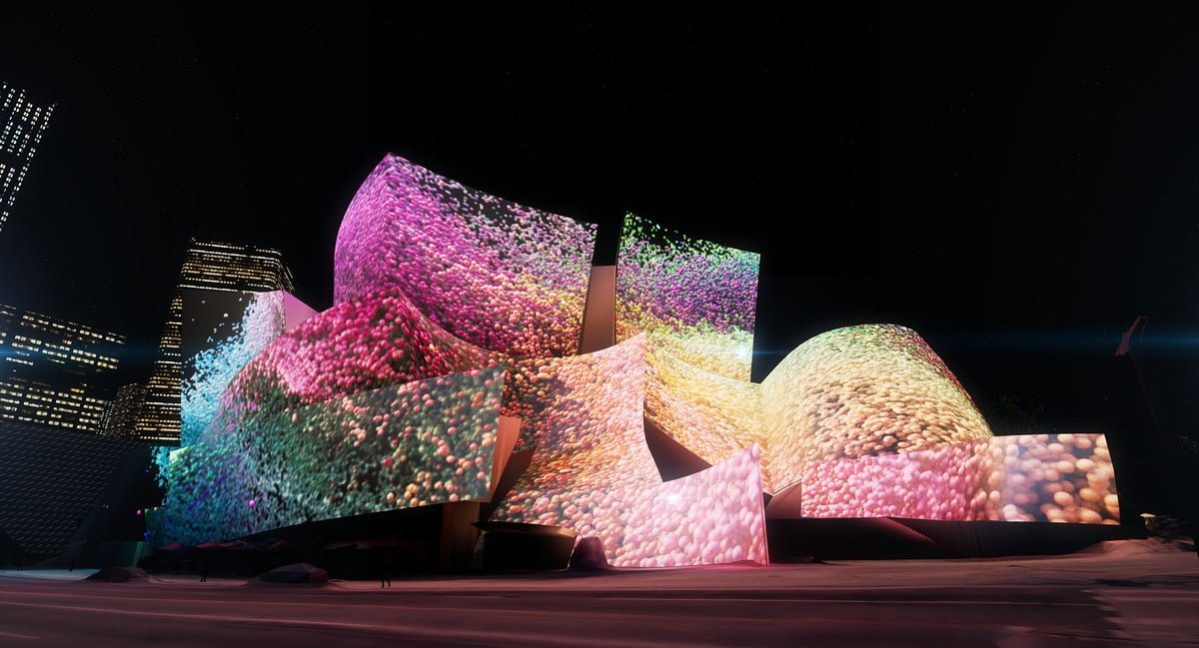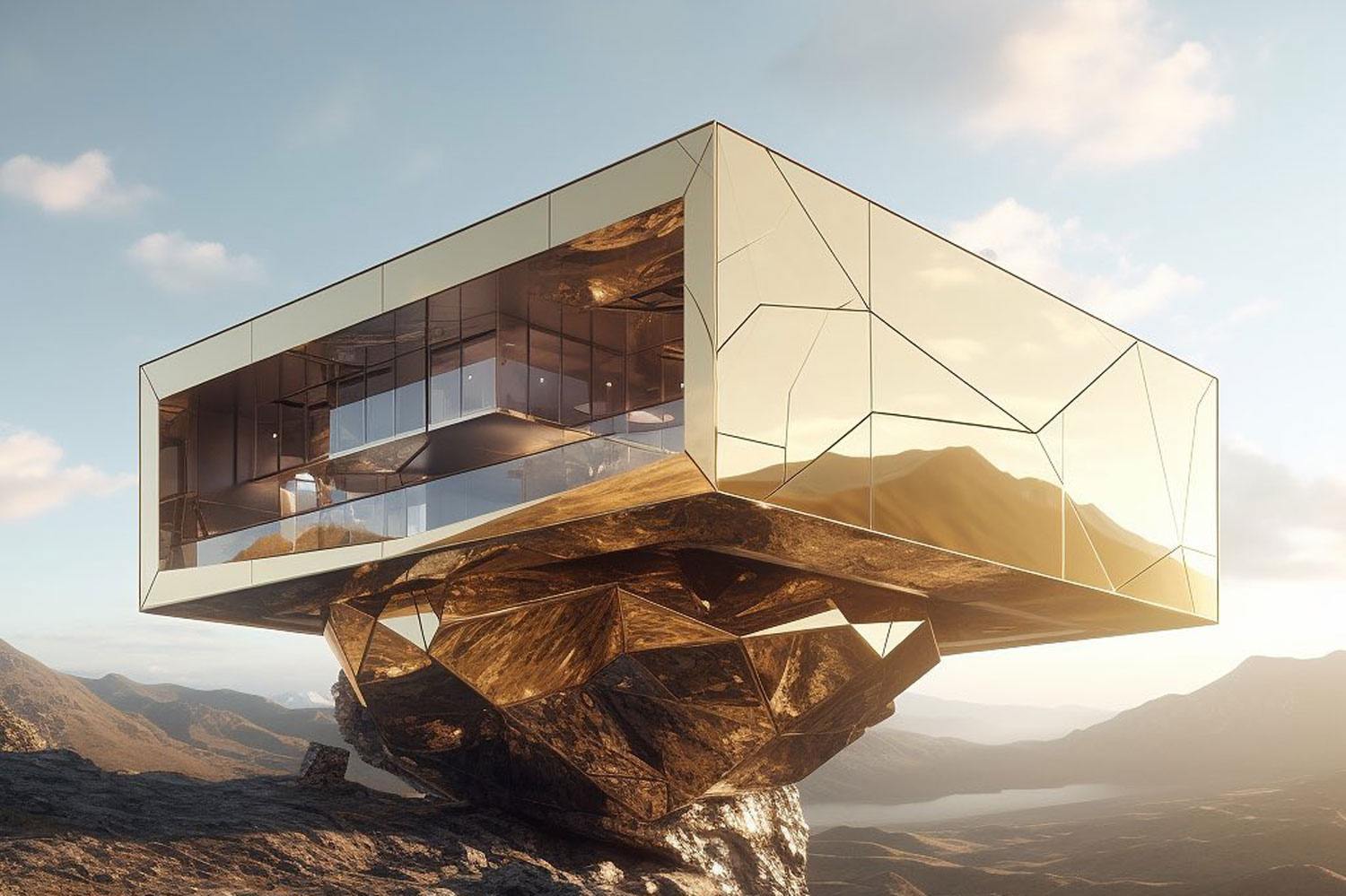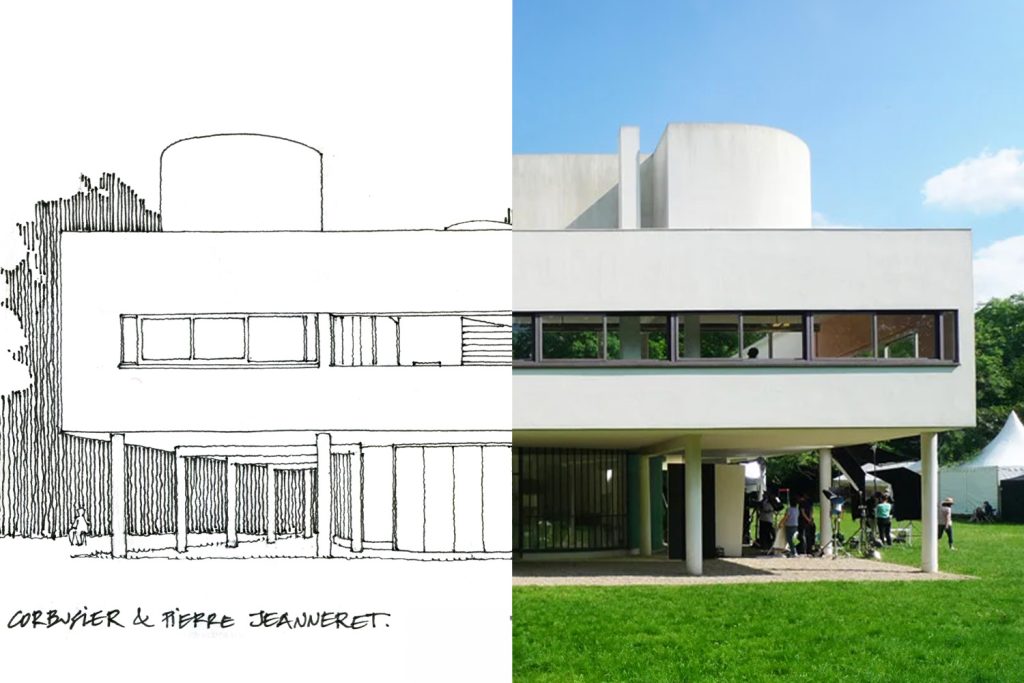
The developing technology has had an impact on architecture over time, as in any other sector. It has affected how buildings are designed and constructed. Looking from the beforehand technical perspective, architectural practice started from hand drawings to advanced computer-aided design (CAD) tools, and now we have the integration of artificial intelligence (AI). Technology has increased precision, efficiency, and collaboration. This evolution not only affected the design process but also expanded the possibilities for sustainable and innovative structures that gratify the modern world’s demands.
The journey started with hand-drawn architectural designs, and now AI marks a transformative shift in the practice with its integration into the process. In the early periods of the practice, architects had long relied on manual craftsmanship to bring their visions to life, and these hand-drawn sketches and blueprints were seen as great examples of artistry. As technology advanced, computer-aided design (CAD) revolutionized the field, enabling better precision and efficiency. Now, the emergence and increasing popularity of AI trigger the beginning of a new era, where machines collaborate with architects to generate innovative, data-driven designs and solutions.
With a closer review, it is easily possible to encounter the three periods of architecture. This article aims to summarize the three eras of architecture that are going through changes in line with developing technology.
1. Hand-Drawing Era
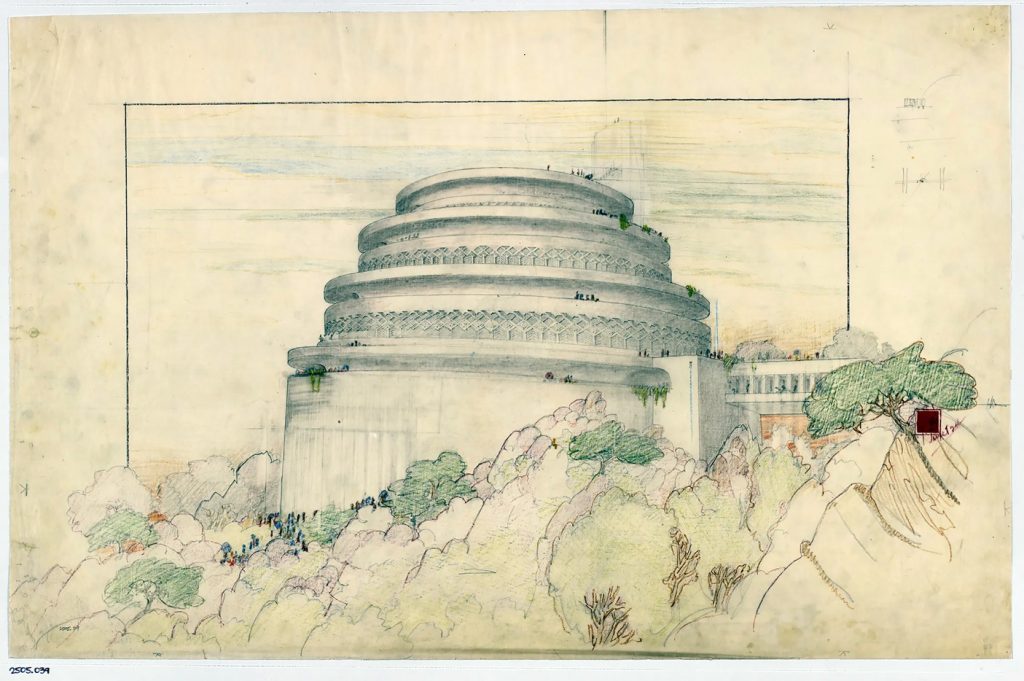
Origins of architectural drawings
The history of hand-drawn architectural drawings dates far back in history. Architectural drawings are the visual documentation of where architects and builders convey their visions and what needs to be executed. These drawings include information such as dimensions, materials, and orientations. One of the first civilizations with architectural drawing recordings is the Egyptians. These drawings were mostly on papyrus using a reed pen and ink. The Ancient Greeks also have recordings of early architectural drawings with detailed designs for buildings like the Parthenon. They mostly used wax tablets to create sketches and transferred these sketches to parchment paper. One of the biggest developments in the history of architectural drawings was Roman architect Vitrivius’ architectural guidebook “De Architectura.” The book included comprehensive details about building techniques, materials, etc.
Hand-drawn architectural drawings improved significantly more during the Middle Ages. To make the concept come to reality, the intricate and detailed designs of Gothic buildings required precise drawings. Cathedrals and other Gothic buildings were meticulously sketched by architects like Villard de Honnecourt and Guido da Vigevano—these sketches, which were frequently created on parchment paper and were intended to be portable.
Architectural prints increased significantly during the Renaissance. A thorough set of architectural designs by the Italian architect Andrea Palladio were printed and widely dispersed. A printing press was used to reproduce these drawings, which were first drawn with ink on paper. This technology allowed architects to share their plans with others and allowed builders to use those plans to build structures. Architectural printing technology made great advancements throughout the Industrial Revolution. With the invention of lithography, architects could create large-scale prints with great speed and accuracy. Lithography made it feasible to create prints on a range of materials, including stone, metal, and fabric. This made it simpler for builders to carry out the designs by enabling architects to prepare comprehensive blueprints on a greater scale.
Life before CAD
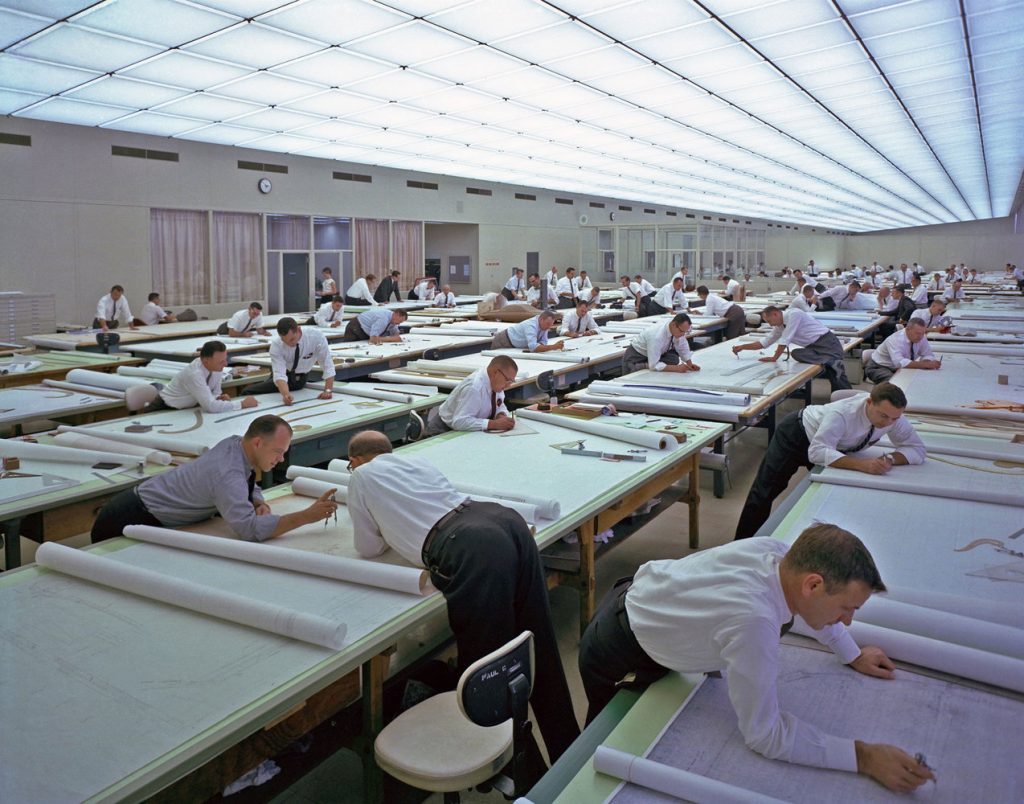
Keeping in mind the large historical background of architectural drawings, let’s take a closer look at the closer history. Before computer-aided design programs, architects and engineers were working with quite large equipment and in large groups to complete the drawings of a project. Many types of tools were necessary, including a drawing board, different-grade pencils, erasers, T-squares, set squares, etc. One of the biggest disadvantages of this type of paper-based drawing is that there is no margin for error and no chance of returning after the drawing is put on paper. This meant that a change to the design had to redo the entire drawing.
These hand-based drawings were not only technical drawings but also were seen as a form of art, that is conducted by skilled designers. However, the time and energy-consuming process of this production has opened a space for a change in the practice. The developing technology and the room for an opportunity to create more precise, quick, and beneficial ways of producing architectural drawings led to the change. Hand drawings are still being used by a lot of architects in the design and drafting phases. The reason for this can be put forward as the idea of flexibility and creativity in the hand-drawing process.
Pros and cons of hand based drawings approach
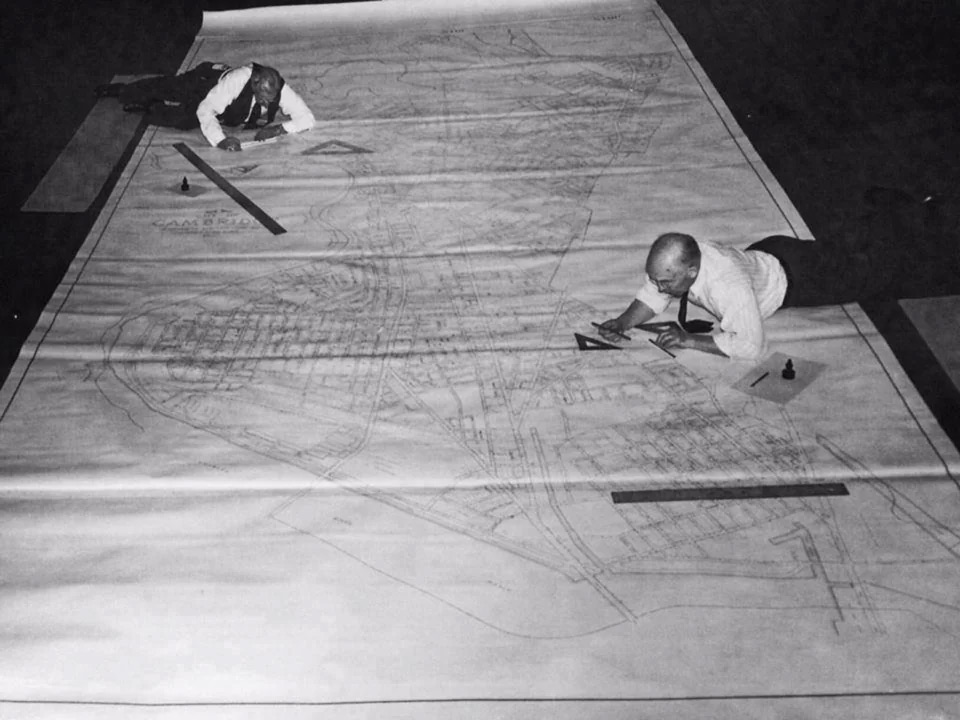
Hand drawings in architecture did not completely disappear with the development of technology. There are different reasons behind this continuation. Even though the advancing technology created major changes and provided multiple benefits, the process of hand-drawing in practice had and still has its own pros and cons.
Starting with the advantages of hand-based drawings, one of the most prominent is the Artistic Expression. Hand-drawn drawings allow architects to convey their artistic vision and design intent with a unique, personal touch. The drawings have the potential to carry a sense of emotion and creativity that digital productions might lack. Another advantage of hand drawings can be counted as Intuitive Exploration. In the words of well-known Australian Architect Glenn Murcutt, “The hand can discover before the eye sees.”
Influenced by this statement, it is possible to say that hand sketches can trigger and encourage architects to spontaneous exploration during the work. Hand-drawing production can be seen as Less Intimidating to the clients and stakeholders. They can be more relatable for the ones who might not have the technical expertise and can help bridge the communication gap and convey design concepts in a more approachable manner. Some of the obvious disadvantages of hand-drawing productions have led to improvements in technical drawings with developing technology and digitalization. Being Time-Consuming is one of the most obvious and problematic disadvantages of hand drawings.
Drawing by hand is a slow process, especially for complex projects. Increasing production time with start-overs and collaborations can cause the extension of the project’s timeline. Revision Challenges can increase the project’s time and can waste the architect’s and engineer’s work done so far. Drawings on paper do not have a margin for error and no chance of return. Another disadvantage can be counted as Limited Precision. As well as the architect’s drawing talents, achieving the same level of precision as digital tools can be challenging. Hand-drawn drawings might lack the accuracy needed for detailed technical plans.
2. Computer-Aided Design (Cad) Revolution
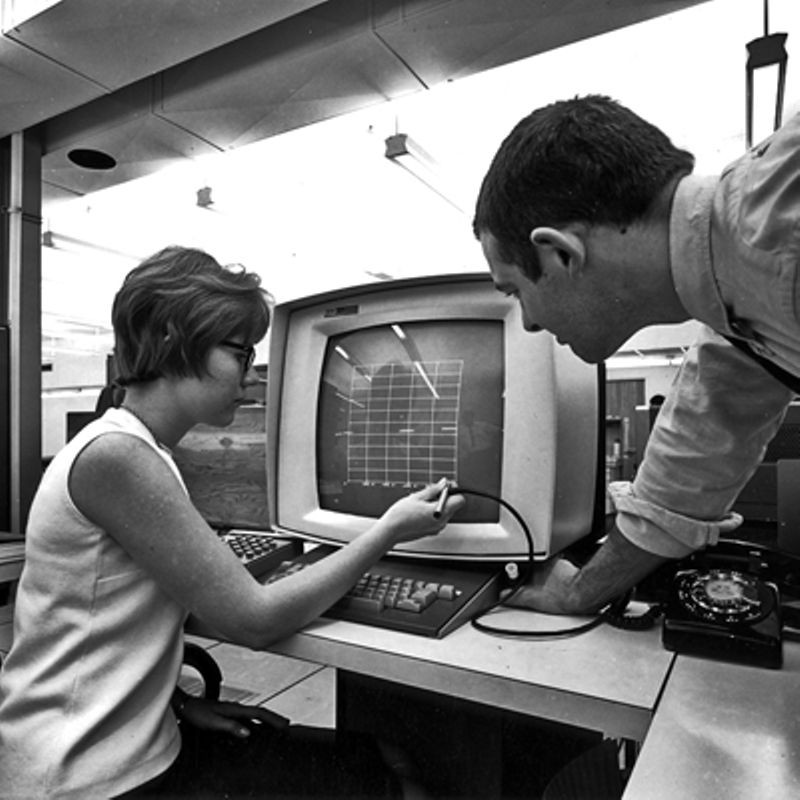
The rise of CAD software and their implications
The method of creating virtual three-dimensional models and two-dimensional drawings of products using computers and specialized software is known as computer-aided design (CAD). The history of CAD dates back to the 1960s, the studies and innovations in CAD started with the necessity to improve the accuracy and speed of design tasks. The program offers an interactive experience where designs are generated as digital models, replacing the conventional manual drafting process with an automated one. Drawing with accurate measurements and a high level of detail that goes beyond what can be done manually is made possible by CAD software. Designers can visually test a concept before building a real prototype with the use of CAD software, simulating how it will work under various conditions.
CAD software can be categorized as 2D and 3D. Commonly used 2D CAD software can be counted as AutoCAD which is typically used for flat drawings such as plans, sections, or any other two-dimensional productions. Although AutoCAD has also included 3D drawing opportunities, they are not widely used because of the presence of easier and more beneficial software for three-dimensional productions. For instance SolidWorks or Inventor. The rise of BIM also has a great influence on the improvement of 3D productions with software in architecture. The shift from hand drawings to the use of software brought various advantages to the process of production in architectural practice.
Advantages of CAD in precision and efficiency

Computer-Aided Design (CAD) has revolutionized architectural drawings by offering great advantages in terms of precision and efficiency. Through CAD software, architects can achieve Enhanced Precision that would not be easy to reach with hand drawings. The Consistent Measurements that CAD provides between units during the design process create an advantage while eliminating the potential for errors that can arise from manual conversions. With basic automatized settings, CAD can Minimize Human Errors.
One of CAD’s most transformative features is its ability to enable swift and Effortless Iterations. Design modifications can be made and adjusted seamlessly without the need for starting from scratch, saving valuable time and effort. Some of the other advantages can be counted as Better Visualization, Real-Time Alterations, Simulations, and Faster Documentation. Designers can produce 3D models, which enable them to observe their creations from any angle and make changes in real time. The spatial relationships within the design may be better understood with these 3D models, which also makes it easier to spot any possible problems before they come up during the production stage. In addition, a lot of CAD systems offer simulation environments where the behavior of the planned object may be evaluated and studied. The earlier possible defects or weaknesses are discovered, the more likely it is that the final product will be stronger, necessitating fewer physical prototypes and saving time and resources.
The advantages of CAD can go beyond merely the efficiency and precision of design. It is essential for enhancing accessibility and collaboration, enabling design teams to work more fluidly and creatively. With the growth of CAD, design and production processes are moving toward a future that is more digital, linked, and effective.
3. AI Integration
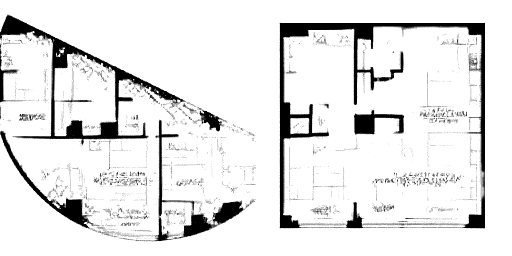
AI’s role in design and optimization
The development of computer-aided can be related more to technical productions. Meanwhile, increasing and developing potentials of artificial intelligence in the field of design and creativity also has the potential of being effective in architectural practice both in the design process and the optimization of data. The development of AI created another and the most recent shift in architecture as well as in many different fields. AI has influenced and helps architectural practice with how buildings are designed, constructed, and operated, offering different and various opportunities for innovation, sustainability, and efficiency.
The ability of AI’s optimizations on design processes is one of its major contributions to the field of architecture. AI systems can evaluate a great amount of data and produce design solutions that can satisfy particular requirements by utilizing developed algorithms and machine learning. This makes it possible for architects to investigate a wide range of options, optimizing elements like spatial organization, energy efficiency, structural integrity, and aesthetic appeal. AI-powered tools can help to produce parametric designs, enable architects to swiftly iterate and improve their work, and result in more innovative and optimized solutions. AI architecture can also help architects to improve their creativity by putting forward inspirational examples. With AI technologies, architects can explore new design possibilities, overcome conventional limitations, and push the limits.
AI-powered solutions are not only beneficial during the design stage but also can be very helpful in both construction and occupied phases. They can help to overcome project management, scheduling improvements, and resource allocation effectively. They can also be used to track and assess a building’s performance, find development opportunities, and facilitate predictive maintenance.
The ethical considerations of AI use in architecture
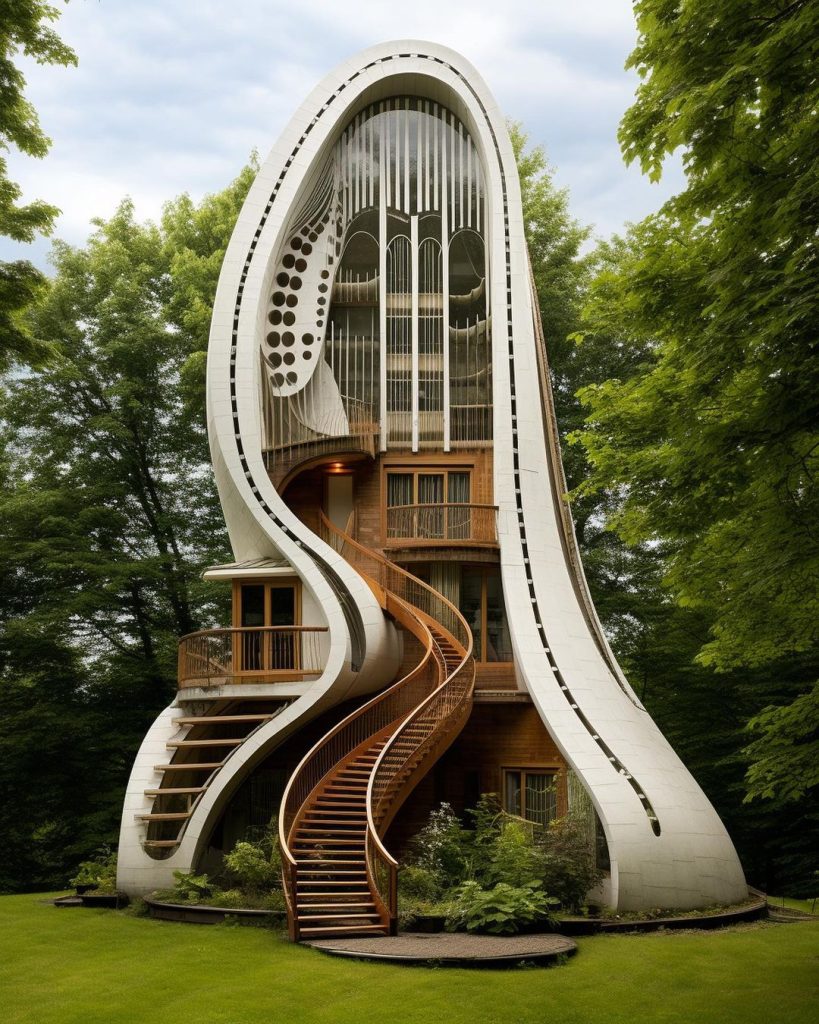
As beneficial as AI can be, there are always some ethical considerations about its use, especially in a creative field such as architecture. In a rational sense, AI can provide beneficial solutions and can create efficient, safe, and sustainable processes. Meanwhile, questions start to arise about the distancing relationship of architects with the design process. Using AI as a tool, a trigger of creative impulses, and a beneficial medium to gain information is thought to be perfect as long as the architects keep their presence throughout the process to infuse designs with human sensitivity and cultural relevance.
AI can play an important role in simulating and predicting architectural performance. AI-powered simulations offer architects helpful insights to create structures that are environmentally responsible and secure, from energy efficiency analysis to environmental effect evaluation. For example, AI can simulate the building’s reactions in different conditions, such as an earthquake, fire, or extreme weather. These simulations help the architect to consider the vulnerabilities. However, the lack of human-centered thinking in AI can create problematic results in the case of occupants’ lives. It mostly depends on how AI is being trained. Therefore, one of the most discussed considerations of AI use is the biased or unreliable views that it can produce.
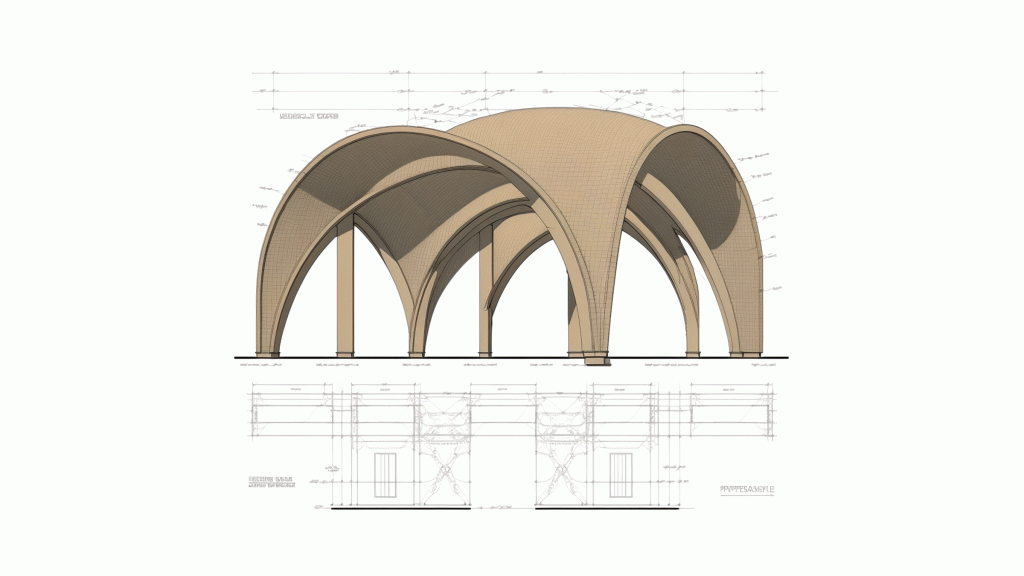
While the positive effects of AI use in architecture in the subjects such as efficiency, or sustainability, one of the most discussed questions is: How do we strike the right balance between efficiency-driven designs and the deeply human aspects of architecture? And one of the common ideas is that: While AI can optimize layouts and reduce costs, it might inadvertently overshadow the cultural, social, and emotional significance of architecture. These considerations can lead to the idea that the solution to navigating this ethical challenge is the architect’s strong existence throughout the process.
Using AI as a tool, as a collaborator that can help through various challenges, and keeping the human-centric outcomes in mind can help to create balanced and beneficial work between the architect and AI. Without the emphatic view of AI, people would look for a more human approach to architecture. Therefore it is possible to say that AI is the new collaborator of architects in this developing period and not a job displacer at least for now.


